
Calculating the correct size radiator for a room can seem confusing, but it is vital to make sure you purchase the right radiator for your home to save heating costs whilst keeping your property warm. In this guide we break down how to use our calculator, what the BTU measurements actually mean, and how to calculate the correct radiator size from start to finish.
By following these steps, you’ll ensure the radiator you choose provides sufficient heat, keeping your space warm and energy efficient. Let’s now break down what the BTU units mean so you can take your results and utilise them correctly.
To accurately determine the right radiator size for your room, follow these simple steps:
Note: The figure calculated will be at Delta T50 and is a total figure for the room – you may need more than one radiator in your room depending on the result.

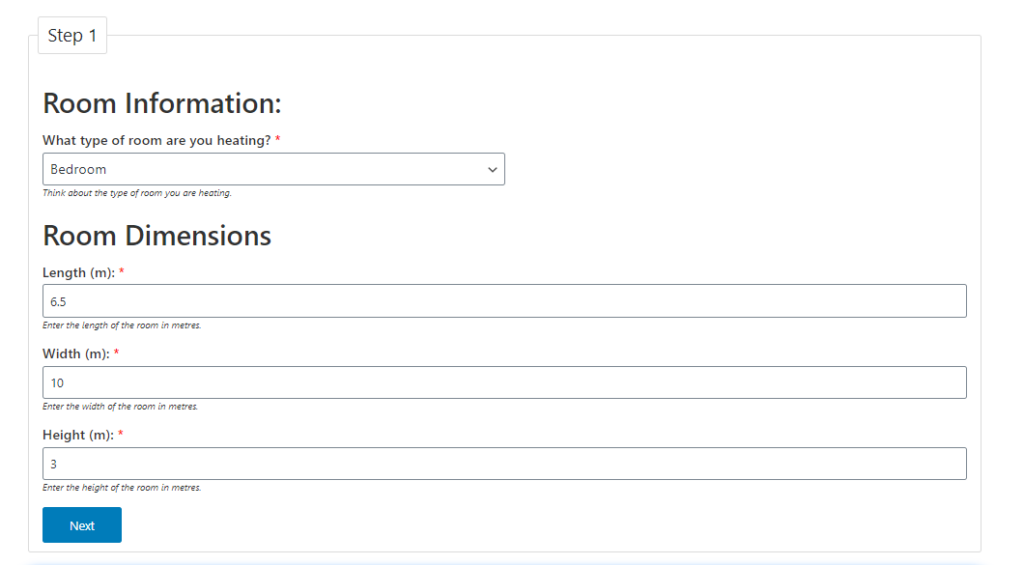
Step 1
First begin with the type of room that you are heating this could be a living room, kitchen, hallway, bedroom or bathroom. Then enter the room‘s dimensions into the calulcator including the length, width and height of the room and move onto the next step.
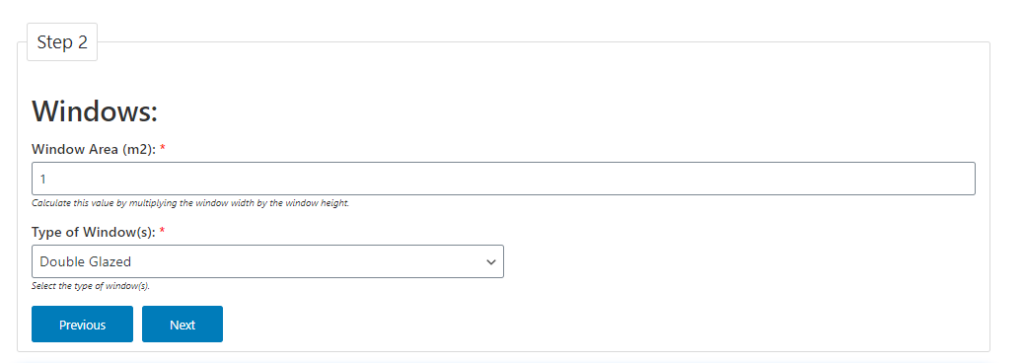
Step 2
Secondly, input the measurements of the window in metres squared – calculate this by multiplying width by the window‘s height. You can then select the type of glazing the windows have, whether they’re single or double glazed. If there are no windows in the room, you can select that option in the dropdown.
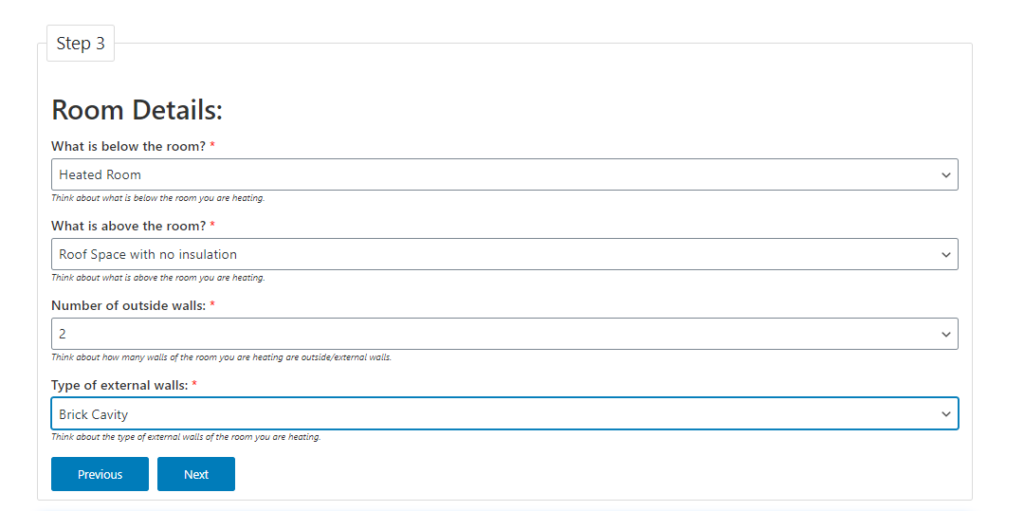
Step 3
Thirdly, work your way through each drop down in the menu. Start by anwering what is below the room and whether it is a heated room, timber floor or a concrete floor. After this, you can select what option is above the room and whether it’s a heated room, a roof, or a flat roof with insulation or without insulation. Then, select the number of outside walls and what type of external walls that they are from the dropdown menu.
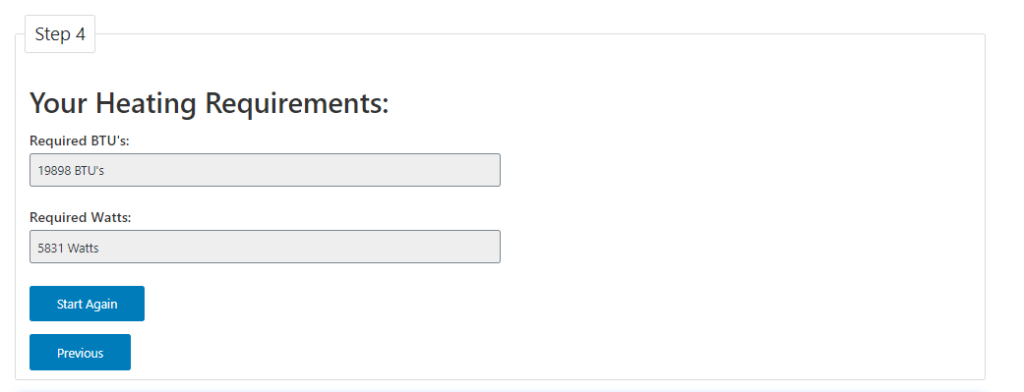
Step 4
Finally take your heating requirements from the calculator and begin your radiator search on the website, considering what style fits your room the best.
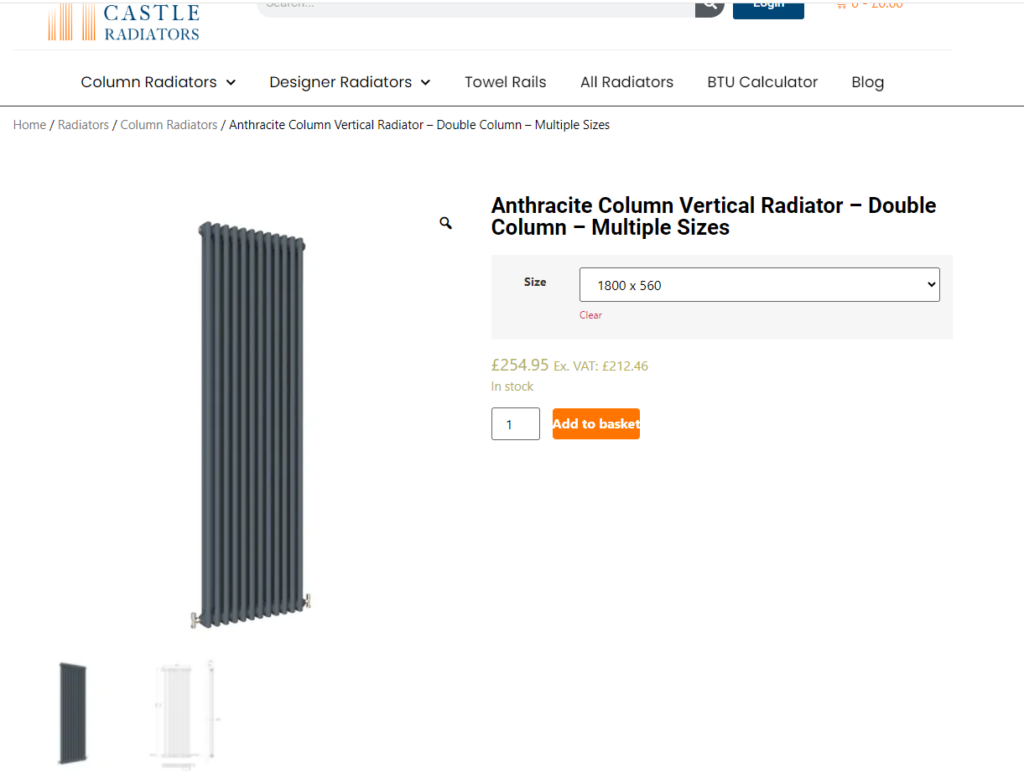
Step 5
Once you have found a radiator from our vast selection of designer radiators on the website, select the radiator from the desired size that you have space to place it in.
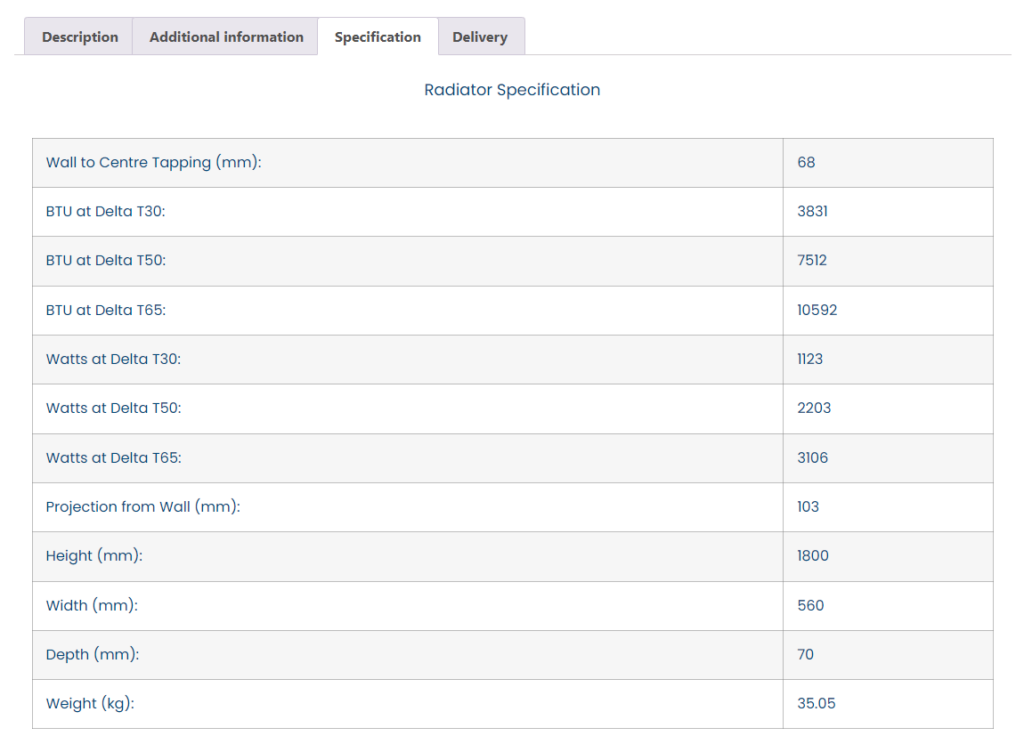
Then scroll down the page and select the specification tab. Look through the different BTU and watt outputs at each delta level (T30,T50,T65). In this case, the room we need heating for has requirements of heat output at 19,900 BTUs and 5831 watts. Each radiator at delta T65 provided an output of 10592 BTU’s and 3106 watts. So, in order for us to get the correct and sufficient amount of heating for this room, we would need two of these radiators at the selected dimensions.
Now you have your results, it is important to know what a BTU is.
A BTU, or British Thermal Unit, is a standard measurement of heat energy. One BTU is the energy needed to raise the temperature of one pound of water by one degree Fahrenheit. In home heating, BTUs are important as they indicate how much heat radiators and other heating devices produce.
Understanding BTUs is essential when selecting a radiator for your home. The higher the BTU rating, the more heat the radiator can produce. Accurately calculating the BTU requirements for your space ensures that your room reaches and maintains a comfortable temperature efficiently.
If the radiator’s BTU output is too low, the room may never feel warm enough. On the other hand, a radiator with too high a BTU output can lead to wasted energy and increased heating costs.
Using a BTU calculator helps you choose the best radiator for your needs, ensuring your room stays comfortable and energy efficient.
Using a BTU radiator calculator is essential to ensure you select a radiator that provides the right amount of heat for your room. Without it, you risk choosing a radiator that either underheats or overheats your space.
A radiator with too few BTUs won’t adequately warm the room, making your heating system work harder and less efficiently. Conversely, a radiator with too many BTUs may waste energy, leading to higher bills and an uncomfortable, overly warm room.
The BTU calculator takes into account key factors like room size, windows, insulation and external walls, helping you make an informed decision.
This ensures you purchase a radiator that not only fits your room but also optimises heating efficiency, saving you both energy and money in the long term.
Having the correct number of radiators in your room is crucial for maintaining both comfort and health within your home. Proper heating is essential not just for warmth but also for creating a conducive living environment. When a room is adequately heated, it prevents the conditions that allow mould and mildew to flourish, as these thrive in damp and cool places.
Mould can pose serious health risks, leading to allergies, respiratory issues and other long-term health problems. By ensuring that each room receives the right amount of heat, you can mitigate these risks and foster a healthier indoor atmosphere.
A BTU calculator helps you find the right radiator size and number for your room. This ensures the temperature stays comfortable and consistent. This proactive approach to heating safeguards your well-being and enhances your overall living experience.
The great thing about using the calculator is that it can apply to all rooms in the building whether it be a lounge, dining area, bedroom, kitchen, bathroom or any other room in need of a radiator to keep it warm.
While radiators are essential for heating your home, they can also enhance the overall look and feel of your rooms. Radiators are available in a variety of styles and finishes, ensuring they complement your interior design.
Our collection includes options such as classic white, black and modern anthracite, allowing you to choose a look that fits your space. Whether you prefer a traditional appearance or a contemporary feel, there’s a radiator to match your décor.
Calculating the correct radiator size for your room is crucial for ensuring efficient heating and maintaining comfort. Utilising a BTU calculator helps you accurately determine the heating requirements based on various factors, including room dimensions, window sizes and external walls.
This tool not only guides you in selecting the right radiator but also helps avoid issues related to inadequate or excessive heating.
Choosing the appropriate number and type of radiators directly impacts your home’s energy efficiency and overall health.
Proper heating prevents the growth of mould and mildew, safeguarding your well-being. Additionally, the range of colour and finish options available for radiators means you can select designs that enhance your home’s aesthetic.
By taking these considerations into account, you can create a warm, comfortable living environment whilst ensuring your heating system operates effectively and efficiently.